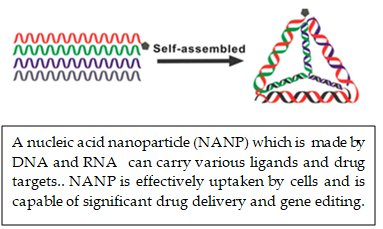

Invention Summary:
Gene editing in hematopoietic stem cells (HSCs) holds immense promise for curing genetic blood disorders such as sickle cell anemia and β-thalassemia. However, a major hurdle lies in the safe, efficient, and targeted delivery of CRISPR/Cas9 systems into these delicate stem cells. There is a critical need for innovative delivery platforms that can precisely guide genome editing tools into HSCs, enhancing treatment outcomes while minimizing unintended consequences.
Rutgers inventors have developed a groundbreaking nucleic acid nanoparticle (NANP) platform designed to overcome these delivery challenges. This novel system precisely controls the shape, composition, and ligand interactions of NANPs to ensure efficient uptake, cytosolic release, and nuclear delivery of CRISPR/Cas9 components in HSCs. Unlike conventional approaches, this technology enables direct protein and guide RNA delivery—bypassing mRNA translation steps—thereby improving editing precision and reducing toxicity. This innovation stands to transform hematopoietic stem cell transplant (HSCT)-based therapies, with demonstrated potential for gene knock-out and knock-in applications in diseases like sickle cell anemia and β-thalassemia.
Market Applications:
HSC transplantation-based therapy for genetic blood disorders:
Advantages:
Improve the efficiency of gene delivery, precision of targeting, and efficacy of gene editing in HSCs by:
Intellectual Property & Development Status: Provisional application filed. Patent pending. Available for licensing and/or research collaboration. For any business development and other collaborative partnerships, contact: marketingbd@research.rutgers.edu